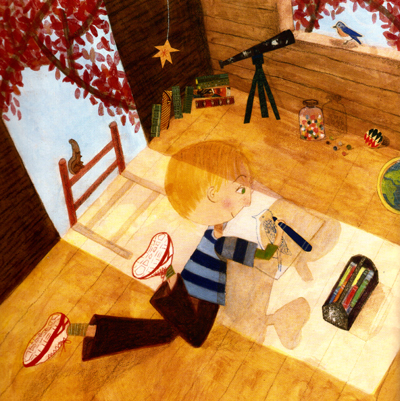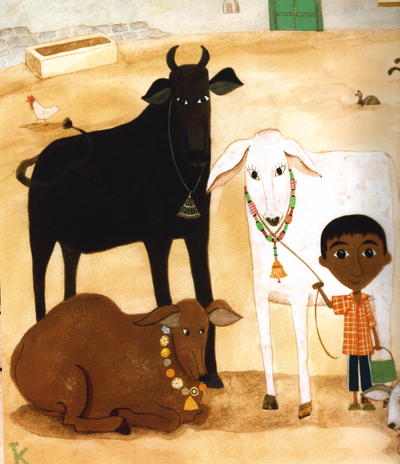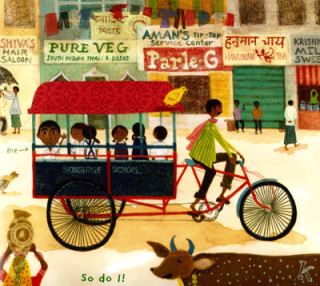New Illustrator Interview
Jenny Sue Kostecki-Shaw: Same, Same, but Different
Interviewed by Margot Abel, Associate Director, Ezra Jack Keats Foundation
Same, Same but Different is based on your personal travel experiences. Apart from actually traveling abroad, how do you feel children benefit from learning about distant cultures, and especially interacting with children who live across the world. Does this exposure in childhood have a deep and long-lasting influence?
I had a pen pal from Belgium throughout my childhood who was very special to me. I think when we learn about cultures outside of our own from a young age, it fuels our curiosity, encourages open-mindedness and inspires understanding, compassion and peace. A friendship from across the world is a rare treasure for any child. These relationships inevitably leave beautiful, life-long impressions.
You’ve been selected for a New Writer Honor as well as the New Illustrator Award. It’s pretty clear to a writer that reading and being read to are important for children. How important is drawing and painting the world around them in developing literacy?
It has been amazing watching my two-year-old daughter discover art. It is all about the process— spontaneous, free-spirited and full of wonder. The most fascinating part is hearing the stories she tells while she is drawing. Her whole body is moving while she is creating. I can’t tell if the story is leading the art or the art is leading the story. Art and storytelling dance seamlessly together. Kids are natural storytellers (they want to tell you EVERYTHING) and they are naturally curious (they want to know EVERYTHING). I think is where their desire to read and write begins. This visual and sensory learning is a powerful combination in developing literacy.

As both a writer and an illustrator, how did the text and images come together for you?
I was teaching English and art in Nepal and traveling in India and Thailand. I just knew the saying “same, same but different” would be a great title and subject for a book. When I returned home, my sketchbooks were a treasure box of inspiration. From there, I wrote many drafts but felt stuck, so I switched to drawing the story, teetering back and forth between pictures and words. The text naturally simplified while the pictures expanded. Developing a physical book-dummy allows me to test it on kids, friends and my editor, and their responses to reading it aloud and looking at the visuals is an invaluable part of my editing process.
Were you a big reader as a girl?
I have always loved books! My mom took us to the library every week. I was skinny but strong. I could carry a mountain of books to the library counter and always checked out the maximum allotment. We read them over and over and I copied the art.
I have always been a slow reader because my eyes don’t always cooperate (the subject of my first book, My Travelin’ Eye. This was a challenge as a child when I started reading picture-less chapter books. Words and sentences got mixed up, and I often read the same paragraph over and over. Although it was (and still is) challenging, I think this helped develop my creative side even more.
You’ve said that Ezra Jack Keats was an important influence. Which other illustrators have influenced you?
Ben Shahn, M. Sasek, Mary Blair, Brian Wildsmith, Richard Scarry, and my teacher Mark English.
How do you think receiving the EJK Book Award will affect your career?
Only in the most positive way! This award is such a gift of energy and encouragement for me at this point in my career, especially in these full, early years of motherhood. This honor acknowledges that what I’m “trying” to say in my books is being understood and appreciated—which is priceless. It also gives me confidence in my voice. I hope to travel at length again internationally as my daughter grows and perhaps live in another country. I love submerging in other cultures, especially rural and tribal ones, and would love to share these experiences as books. Also, Ezra Jack Keats just evolved from hero-status in my mind into a mentor.
What advice do you have for hopeful young illustrators?
Open—then open more. Be yourself and embrace who you are and how you see the world. Make art that truly makes you happy.

